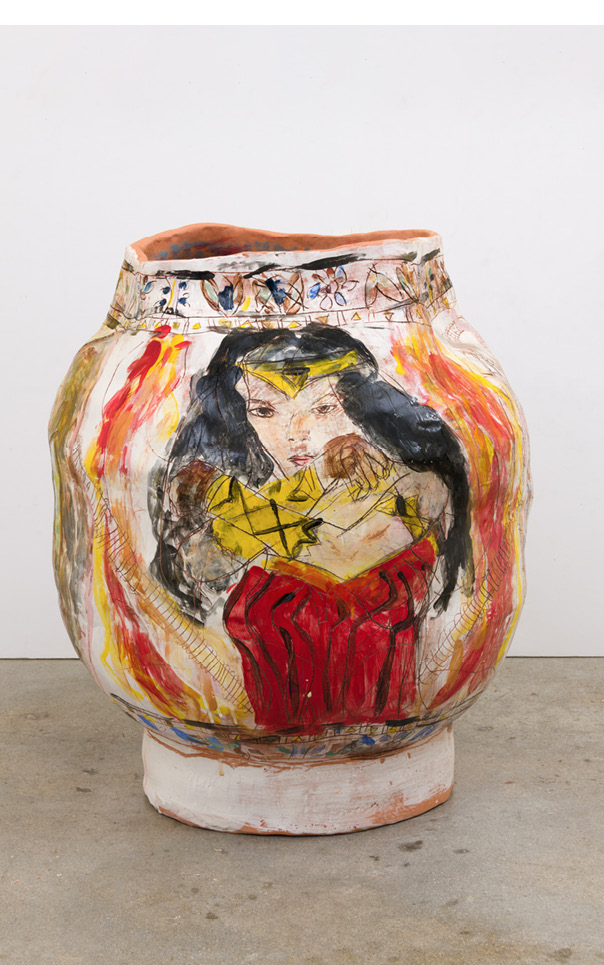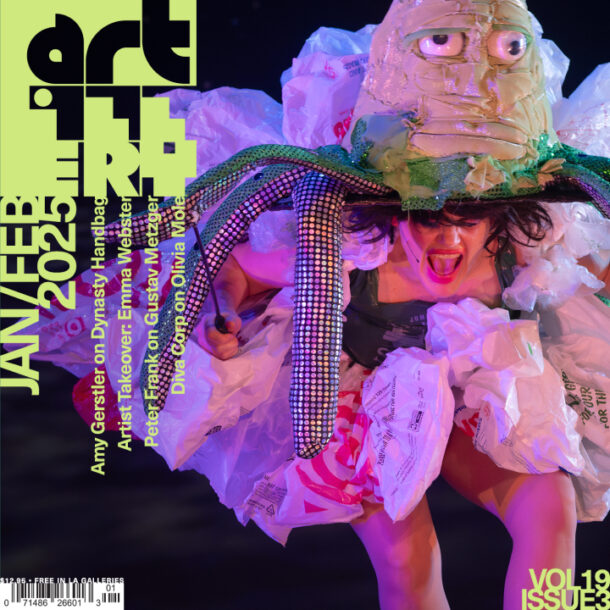The rough-hewn almost ungainly presence of the ceramic vessels that sit directly on the floor in the small space echoes the distinctly DIY atmosphere surrounding them. Festooned with motifs that draw on images ranging from decorative to topical and from historical to contemporary, the work on display is a kind of diary or handheld sketchbook where the formal qualities of the rendering are subordinated to the graphic immediacy of the research that the artist is conducting. Jennifer Rochlin’s accompanying untitled 2D works of oil and collage on paper underscore the poetic reach of “Wild is the Wind”: it is an effort to fit incongruent categories within the register of art and create hybrids that locate the mundane within the reach of the universal. As with the glazed ceramic urn Wonder Woman, Rocks, Sea, Shields/Rope Pattern (2018), categories are collapsed and hierarchies are leveled.
Charting in another way the convergence of the everyday onto a broader historical plane, Nick Kramer’s mixed-media works in “No Neighbors, Street Lights Are Out” follows an equally winding path through the impressions that the world immediately around him places in the artist’s eyes. A series of works all titled Weather Balloons (2018) appear at first glance to be the somewhat dulled bodies of shrunken satellites or enlarged spinning tops, but on closer inspection are seen to be the shapes of aluminum pots and pans collected, shorn of handles or signs of aging, and aggregated in vertical columns. Proposed as stand-ins for failed near-space exploration devices, they hang at various heights throughout the gallery. The nearby presence of photographs, all titled A Hand of Pots and Pans (2018), in which these aluminum rounded casings are portrayed with handles and stains intact, underscores the somewhat dystopian neighborhood that the artist is exploring internally and externally. Even in the lightness of the polychrome aluminum work, such as Green Moon (2018), with its light green and pink hues coursing below an orange route indicator, an ineluctable melancholy pervades the work.
All in all, the experience of the art at The Pit fluctuates between the forlorn qualities of a metaphorical pit from below and the necessity of pits, like those at the center of fruits. The view from there is not particularly optimistic but it is not entirely about giving up hope altogether. It is more about looking around the corners of the obvious and accommodating the scruffiness of the world in order to see what actually might be in there, even if it isn’t by any means perfection.



